Pit your Wits...
Pit your wits against the combined brain power of the Naked Scientists, in this question and answer Special as the team try to find out the truth behind the age of the Milky Way? Whether plants die of old age, and how cats make their fur stand on end? Plus, in the news, contagious yawns, and how the number of takeaways on the way to work affects your risk of weight gain...
In this episode

Would weighing scales still work on Mars?
Richard - I've never been there either and I love John that you've got two different types of scale in your bathroom. That's fantastic! I avoid both of them. You've hit on the difference between weight and mass. So, a traditional scale in your bathroom uses a spring. That is measuring a force which is mass times acceleration which is the mass times the acceleration which on Earth is gravity. So, that measurement would be different on Mars because gravity is less, and even more different on the moon because again, gravity is less. If you look at one of the counterbalance ones though, that does measure mass. So, you have you on one side and your masses on the other, so your kilos or your pounds if you're American on the other side. That should work equally well both on Earth and on Mars because gravity is affecting both sides of that balance equally.
Chris - John, so bottom line is, because it's a counterbalance system, regardless of what the gravity field is, it's going to attract both sets of mass by the same amount. And therefore, it doesn't matter whether the gravity is high or low. It will pull you down as hard as it's pulling the mass that's balancing you down so it should still work.
John - So, when we send an astronaut to Mars, he's going to take a counterbalance weight with him to keep his weight under control.
Richard - Or they could just calculate it based on Mars' gravity rather than on Earth gravity. So, you just need some scales with a spring. You could have spring scales but just adapted for Mars gravity with the scale adapted for Mars gravity rather than Earth gravity.

Why do we open our mouths when
shocked?
Ginny - So, emotions are a really interesting thing and if you think about them evolutionarily, the point of emotions and the point of the facial expressions we make when we're expressing emotions is to communicate with other people. So, there's been some interesting research that goes back as far as Darwin and more recently, Paul Ekman who actually looked at people around the world and how they express different emotions. And they found that there were some basic emotions that are expressed in basically the same way. So, wherever you go in the world, if someone's angry, they'll sort furrow their brow and maybe bare their teeth. If they're fearful, they'll widen their eyes and possibly open their mouth. I think surprise probably is linked to fear a bit. So, it could just be that these emotions, we all have to do the same thing because that's the only way that we'll know what the other person is feeling. Another idea for why exactly surprise is an open mouth could be that it is sort of a subset of fear. When you're fearful, what your body does is it tries to prepare to deal with the thing that's frightening you. So, it prepares to either run away or fight - the 'flight or fight' response. In doing that, one of the things that it needs is more oxygen because it needs to prepare your muscles to either fight or to run away. So, opening your mouth and sort of taking a big breath is going to get lots of oxygen into your blood and might help deal with that. And widening your eyes hopefully gets more light in so you can see better. So, it could be all related to that sort of thing.
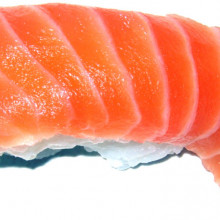
Does the DNA of food survive digestion?
Chris Smith answered this question...
Chris - This is very interesting because, originally, people thought the answer to this was no. But then, about 4 years ago, there was a lovely paper published in the journal Nature where scientists had been taking samples of seawater. They had studied the DNA of these seawater samples and they had found a combination of genes which encoded enzymes to break down a certain set of sugars in seaweed. They thought this was brand new - no one had discovered this before.
So, they had a look in the database of genes compiled from all over the world. And they were rather annoyed to see that someone had published a very similar DNA sequence previously and they thought, "Who's done that? That's annoying!"
But, then they found that these gene samples were all collected from people in Japan, and they all corresponded to samples taken from the intestines of these people. They realised what's happened is that people are eating sushi in Japan - because that's got seaweed in it - and the bacteria they were studying in the sea were eating seaweed; the people had eaten some seaweed and the DNA from the microbes in the seaweed had leached out into their intestines and those people's own intestinal bacteria had picked up the DNA and incorporated the genes into their own genomes.
This is as one person put it, rather like you going into a restaurant and someone equipping you with a brand new knife and fork to eat a rather tough steak with because if you see a sharper knife and fork, you think "I'll have that one instead of the blunt knife I've got already!"
So, yes, DNA can survive transit through the human digestive tract, and other organisms can actually incorporate it, which I think is absolutely stunning.
Richard - It's amazing, isn't it? I'm stunned that you look at the process of something passing through us and everything is sort of subjected to the acid and the attack by the body, and all the bacteria, and yet, DNA can survive that. That is incredible!

How old is the Milky Way?
Tamela - We do know the age of the sun and the Earth. It's about 4.5 billion years old. The way we start looking at how old our galaxy is, is by looking at the contents of it, so looking at the age of the stars that it contains. If we look at the stars in our Milky Way, we find that some of them are actually about 13 billion years old. So, really dating back to the very, very early beginning of the universe. Possibly, there's even an older generation of stars which have already died out, but we can look at the abundance of heavier elements within our galaxy. These are only formed in supernova explosions - so, the death of stars or through cosmic ray interactions. This gives us an idea, sort of like carbon dating- how old our galaxy must be. Some estimates put about 13.2 billion years old. So, that gives you a rough answer, but if you're talking about the actual shape of the spiral galaxy itself, that's probably much younger. So maybe 10 billion years or so, for it to actually have built up into the structure that we recognise today.
Chris - Still pretty old though, isn't it, when you think that the universe as a whole is only 13.8 or so billions years old.
Tamela - It's extremely old, yeah.
Chris - So Milky Way is quite an old thing.
Richard - Well, that's why I was wondering. Does that mean that pretty much all the galaxies came fully formed very quickly after the big bang?
Tamela - Quick in the timescale of the whole universe I suppose, but they did build up from - initially, they were just small perturbations, the local areas in the universe that were denser then others, they started to form stars. The stars gravitationally bound together into globular clusters and stuff. We believe that there was this hierarchy building up into the galaxies that we recognise are spirals and elliptical galaxies.

How do cats make their fur stand on end?
Ginny - So yeah, I think this is probably a very similar mechanism. So, when we get cold or when we get scared, the muscles that hold the base of our hair in place contract and that makes the hairs on our arms or on the back of our neck stand up. But you might notice that it doesn't happen to the hair on our heads and that's probably for the same reason that it doesn't happen to your longhaired cat. That's just that the hair is too long. So, these are only very tiny differences that are happening in the skin. But because the hair on your arms is quite light, it's quite short, it can make it stand up. It would just be too much weight and too difficult to actually make a very longhaired cat's hair stand up. If you think about the evolution of this, yes, way, way back when cats were alley cats, it was probably great to be able to puff up your tail and make yourself look bigger and scare off competitors. But actually, there's no negativity for your longhaired cat to not be able to do that because I'm assuming it's pretty pampered and doesn't have to fight off other cats very often. So, there's been no selective pressure to keep that ability. So, it doesn't really matter that they can't do it anymore.

Can laser beams propel vessels in space?
Tamela - There is a pressure from light, isn't there?
Richard - Yeah, there is pressure from light. So yes, in theory, it should be able to. So, we've got the development of solar sails for instance.
Tamela - Exactly. That's what I was thinking of as well.
Richard - Yeah. You can certainly use the propulsion from the stream of charged particles that are coming from the sun to move along. So, if you imagine the sun, it's belting out these particles all the time. So, if you can use those, you can actually use that to push you along.
Tamela - But it's radiation as well. It's actually photons providing the pressure. When you look at pictures of stellar nurseries, we have lots of really bright young stars. You see these clouds that have been hollowed out because of that radiation pressure just pushing the matter away. So, definitely, photons do provide a pressure. in terms of lasers, that's a different..
Chris - Can I show off?
Richard - You know do you?
Chris - I know something that enables me to show off very slightly, which is there's this lovely thing called the YORP effect which is the Yarkovsky-O'Keefe-Radzievskii-Paddack effect, which is probably why it's called YORP. This actually is exactly the phenomenon you're describing. We know for instance where the impactor that wiped other dinosaurs came from. It came from the asteroid belt. It was dislodged in the vicinity of Mars probably about 70 million years ago. The thing that probably did the dislodging was light, because these asteroids, if you've got light impacting on one side of them, the photons of light are going to impart momentum to them and give them a nudge. This can cause the things to move a little bit. This can make them then bash into other things and that's exactly what happened. We think it nudged the asteroid a little bit and caused it to break up and ultimately impact on the Earth. But this effect is very real and with lots of light falling on a big surface for a long time, it does impart a nudge. That nudge can ultimately move very big things along a course.
Richard: - I can answer a different question on lasers in space. It doesn't address the propulsion system. They are using lasers in space right now as a new satellite, alpha sat, which was launched around about this time last year. That uses lasers for communication because you can do then speed of light communication. It's in geostationary orbit so it's way very high above the Earth, sort of sitting there above the Earth. It can communicate. It's using laser to communicate with satellites which were in low earth orbit, which were only a few hundred kilometres above the Earth.
Chris: - Probably, one of the most famous laser beams is the one which is bouncing off of a mirror on the surface of the moon because lots of people say, "How do we know how far it is to the moon? How do we know that people went to the moon?" Well, they put a mirror there and there's a laser beam being bounced every day between the Earth and the moon, and that's how we know that the moon is getting about 2 cm further from the Earth every year. Why is it doing that? Because, as it goes around the Earth, it's attracting water on the Earth's surface towards it in a tidal bulge. But, because the Earth is turning, that bulge is slightly ahead of the moon. So, it's exerting a pull on the moon and this means the moon rather like a slight shot, is speeding up a bit. The Earth is losing a bit of energy. The moon is gaining a bit of energy. And if it's going faster, and the gravity between the two isn't changing, so the moon therefore, is going to move away very slightly. So, year on year, it's slowly escaping. So in fact, tides are getting slightly smaller on Earth. So, if we were to wait a billion years or so, we might have very, very small tides which would probably come as a relief to people who live along the east coast the next time there's a storm surge.
Richard: - And isn't it amazing that there's an Apollo era, more than 40-year-old, experiment still working. We're still using Apollo science on the moon.

Can I produce electricity out of heat?
Chris - That's of course what a lot of space probes are doing, isn't it? They're using the thermoelectric effect.
Richard - The spacecraft can generate energy all sorts of ways using solar panels, using light, you can use heat. There's also a great thing you can use in space which is a difference in temperature from one side of your spacecraft to the other side of your spacecraft. So, you've got a difference of a few hundred degrees between one side and the other which it is like you've got a refrigerator in space. So, you can do all sorts of cool things with that as well.
Chris - I think the Voyager probe is using...
Richard - It's plutonium I think and it's only got a few more years left in it in theory. But then they said that about Voyager for the last 5, 10 years and it's still going strong and it's still probably now left the solar system. They still can't tell quite where it is.

Do photons at light speed stop time?
Tamela - He's probably been studying relatively longer than I have, but I'll do my best. So, absolutely right. If the particle is approaching a speed of light and had a clock on it, we as observers of that particle going extremely fast would see that time slows down and approaches this sort of eventual stopping. It is impossible to imagine the frame of reference at the speed of light- special relativity doesn't really deal with that. It takes the speed of light as a constant and that's regardless of what speed you're going at. So, even if you're 99% at the speed of light, you're still measuring c as c. So in that sense, it is difficult to answer what kind of time is the photon experiencing. But just to say that if you were a particle, maybe at 99% at the speed of light, in your own frame of reference, time is moving normally. You have a much faster ticking clock compared to the observer that sees that time has nearly slowed down. Actually, you've probably heard of this, but we've experimentally confirmed time dilation here on Earth. There was an experiment back in the '70s that put these atomic clocks on commercial aircraft and had them fly around the Earth, both in the eastward direction and the westward direction, and we're able to compare, once they got back on Earth with sort of naval observatory clocks. Actually, there was this difference because they were moving faster than the Earth's rotation at some point.
Chris - The great pyramids also distort time because they're very massive and so, they bend space time. So, time travels at a different rate.
Tamela - Exactly, yeah.
Chris - Yes, which that really does blow my mind - the whole concept of you going near something very massive and time changes. So, you go to Egypt, sit next to a pyramid and actually, time is distorted. So maybe the Egyptians were on to something when they said that they were going to try and make their pharaohs immortal because relative to the rest of us they are ageing more slowly.
Tamela - To extend this even further, if you go to a black hole and kind of start falling into a black hole, you're observer is seeing that time has nearly stopped for you as you fall towards it because you've warped that time so much. So yeah, lots of interesting things going on.
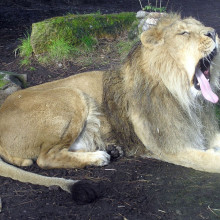
22:09 - Are you a contagious yawner?
Are you a contagious yawner?
Ginny - So, we all know what yawning is, but there are actually two forms. 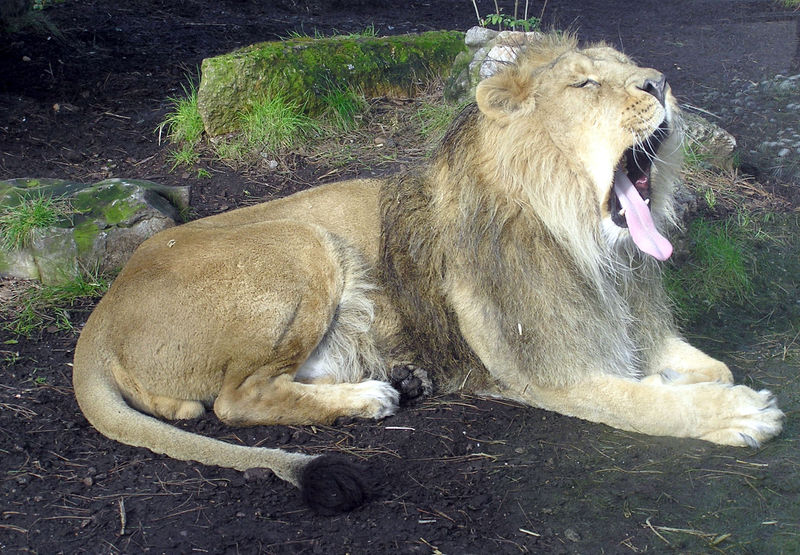 There's the form that you do when you're tired or you're bored, and then there's the other form which is contagious yawning, which is what happens when you see someone else yawn or even just hear people talking about yawning. I predict that by the end of this news story, at least one person in the studio will have yawned. This is really interesting because actually, humans aren't the only ones who do it. Chimps do it as well and even dogs can catch their owner's yawn. But no one really knows why it happens. It had been thought that it related to empathy. So, you're trying to empathise with someone, understand what they're feeling, so you're sort of mirroring them. But this new study from a group from Duke University in North Carolina actually studied over 300 people. So, it was quite a big sample size. They found that actually, empathy didn't relate to how likely you were to yawn after watching a 3-minute video of people yawning. They tested people twice. They got them to watch this video and some of them, they tested in the lab and then some of them at home, and then some of them it was at the lab twice and lots of different combinations. What they did find which is really interesting is that it was a very stable trait, how likely you were to yawn. So, if you yawned the first time you watched it, you're likely to yawn the second time. They were trying to work out what other sort of personality traits or factors might affect your likelihood of yawning.
There's the form that you do when you're tired or you're bored, and then there's the other form which is contagious yawning, which is what happens when you see someone else yawn or even just hear people talking about yawning. I predict that by the end of this news story, at least one person in the studio will have yawned. This is really interesting because actually, humans aren't the only ones who do it. Chimps do it as well and even dogs can catch their owner's yawn. But no one really knows why it happens. It had been thought that it related to empathy. So, you're trying to empathise with someone, understand what they're feeling, so you're sort of mirroring them. But this new study from a group from Duke University in North Carolina actually studied over 300 people. So, it was quite a big sample size. They found that actually, empathy didn't relate to how likely you were to yawn after watching a 3-minute video of people yawning. They tested people twice. They got them to watch this video and some of them, they tested in the lab and then some of them at home, and then some of them it was at the lab twice and lots of different combinations. What they did find which is really interesting is that it was a very stable trait, how likely you were to yawn. So, if you yawned the first time you watched it, you're likely to yawn the second time. They were trying to work out what other sort of personality traits or factors might affect your likelihood of yawning.
Chris - So, were there some people are really yawn-resistant then?
Ginny - Yes, there was...
Chris - So, we need them as listeners, don't we?
Ginny - Well no, because I'm assuming you're not talking about contagious yawning. You're worried about people yawning through being bored.
Chris - And it doesn't apply.
Ginny - No, this is just contagious yawning. But yeah, they found some people just don't yawn at all. Some people are really resistant to it. And actually, they asked those people whether they were just suppressing it and they said, no. They said they didn't feel like doing it. I'm a contagious yawner. Even when just reading this paper, I was yawning a lot. I'm kind of suppressing one now in fact. So, they were looking for different factors that might explain why some people yawn and why others don't. And they found that age was important. So, older people are actually less likely to have contagious yawns. But that only explained 8% of the variation.
Chris - It wasn't because they were asleep already.
Ginny - No, it wasn't that.
Chris - Just checking.
Ginny - But yeah, 8% which is a tiny amount of this variation. Once that had been taken into account, empathy and other things like the time of day they were watching the video, the people's intelligence, none of that seemed to have an effect. So, the group are now wondering whether there's a genetic link because if it is such a stable trait that some people are yawners and some people aren't, it may be that that's something to do with genetics. And these all might sound quite frivolous, but actually, we know that people who have conditions like Schizophrenia and Autism don't experience contagious yawning as much. So, if we can understand a bit about why some people do and why some people don't, that might shed some light on those kind of conditions.

How many genes for a genetic fingerprint?
Chris - The answer is, it actually takes none because the way in which they made and this is Alec Jeffreys who got a medal actually for the discovery of the concept of genetic fingerprinting back in the later 1980s. The way this works is that you use a part of your genetic code called VNTR's - Variable Number Tandem Repeats. There are some parts of your genetic code that don't code directly for a protein which you could detect in your cells. That's what genes normally do. So, you've got other bits of your DNA that don't code for things like that. Because they don't code for things, if changes happen to them, it doesn't matter to how the cell works. And so, certain bits of genetic sequence in those particular regions can be copied many, many times and it doesn't matter because it doesn't affect how the cell works. So, one person might have 15 copies and another person might have 500. If you cut the DNA up with molecular pairs of scissors called restriction enzymes, and they cut in various places in amongst these so-called variable number tandem repeats, you will get chunks of DNA of different sizes for every single person. And that's how a genetic fingerprint works. We're not necessarily sequencing genes although we can these days. Actually, those genetic fingerprints were based on random amplifications or copies of bits of DNA that don't actually necessarily do anything.
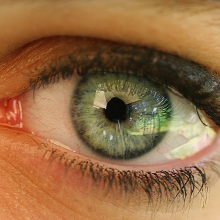
How does the brain recognise what we see?
Chris - Ginny, we've got a phone call here from Lori. Hello Lori.
Lori - Hello.
Chris - Fire away!
Lori - My question has to do with eye sight and I'm studying medicine so I know how the physiology and the biochemistry behind light falling on the retina and the it changes in GDP, etc. and going to the brain. But my question is, how does the brain know that all those chemicals and the synapses and then you have the electrical input, how does it make an image out of that? I know the association like with going to the brain and saying, okay that's an apple, that's that, but how do you see?
Ginny - So, seeing is all about experiencing and you're right. It's very weird to think that all these kind of signals can suddenly turn into a picture, representation of the world. That's actually what your brain is doing for you every day. It turns this sort mess of information into something that'll help you navigate the world. And it does that through experience. So, you've seen many, many times a table and you know that it has four legs and it usually has a rectangular top. So, when you get information coming in which is telling you there's a weird sort of rhomboid shape with only three legs, your brain doesn't say, "Oh, that's a really strange-shaped table over there". What your brain says is, "We're seeing a table from an angle and there will be another leg. You just can't see it." And it does all that through experience. Actually, you're not taking in as much information all the time as you think you do. We all like to think that all the time, we're taking in everything that's around us. But actually, that's not true. Your brain is very good at just picking out the things that are important for your survival. So, we're very good at detecting movement because that might mean something that's going to attack you so you'll be drawn to that. But we actually don't really pay attention to the rest of the world all the time. Your brain just picks out those really important things. If you look at some visual illusions, they can tell you some of these clever ways our brain uses. So, lots of things to do with perspective. You'll assume that things are bigger if they're further away. And you can trick your brain using these illusions and that's what psychologists actually use to work out how we determine this kind of representation of the world.
Lori - But what about is I've never seen something before? What if you were, let's say, put onto a space ship and you're brought to something and you don't know what that object is?
Ginny - Well, that's really interesting. I don't know if I've had the experience where I've seen like a plastic bag in the corner of my eye and thought it was a cat or something. So, your brain is always trying to guess what things are. And if it's something that's completely new, it would probably take a while and you'd probably be looking at something and trying to work out what it was and you probably end up looking at it from a few different angles before you could work out what shape it is. But most of the time, we've seen most things before. So, it's not too difficult. But yeah, if it was something brand new, you would have to go down to the very basic, what colours and what shapes are coming into your eye before you can build up that kind of 3D representation of what it actually is.
Lori - Okay, cool. Thank you.

What would happen if you sneezed in space?
Tamela - Actually, that's a funny question because I was thinking of this the other day, having a lunch time chat. But if we're in space, I'm going to assume you're either in the space vehicle or you're in your space suit, you've got your helmet on, I was wondering - I don't actually know the answer, but what if you sneeze when you're on your space suit doing an, an extravehicular walk and suddenly it gets all over your face shield, maybe you need windscreen wipers or something. Richard looks like he knows what might happen.
Chris - That could be bad.
Richard - Well, I was going to tell you, sneezing is very similar. I was talking to actually Chris Hadfield, the Canadian astronaut about sweat in space. He writes about this in his book. So, you're on the treadmill in the International Space Station and as you normally sweat. Well, sweat will normally stay on your skin. In the space station, when you're in this microgravity environment, the sweat literally pings off everywhere.
Tamela - Sure, these little droplets.
Richard - Yeah, these little drops of sweat. You have to keep wiping yourself down. Otherwise - and this is so unpleasant - you zap your crewmates with your sweat. It's equally true with a sneeze. So, if a sneeze has coming out of your nose and heading for one of your crewmates, it will just keep going.
Tamela - So, sort of lethal.
Ginny - Would you also be propelled backwards if you sneeze because with the whole equal and opposite forces, I know that if you say, open a fire extinguisher when you're on a wheelie chair, you get propelled backwards. So, if you sneezed in space, would you start flying off in the other direction?
Chris - Depends where your nose points, doesn't it? I mean, did you normally sneeze with your ... wouldn't you be propelled upwards, Ginny?
Richard - Used as some sort of propulsion system.
Ginny - Yeah, okay. Would you go upwards though?
Richard - I suppose yes is the answer.
Tamela - You'd have to hold on to something.
Richard - You would because it doesn't take much to start moving. The big problem that the astronauts have in space is the stopping. So, if they're moving heavy weights around the space station for instance, they can pick up a heavy weight, no problem at all. And they can start moving with it and then they realise, "Oh no, the bulkhead is coming up. How do I stop?"
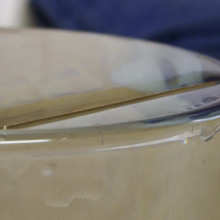
32:11 - Crash, Bang Squelch!
Crash, Bang Squelch!
with Cambridge Hands-On Science (Chaos)
Chris - Now, it is the Cambridge Science Festival happening at the moment and one of the really big highlights certainly for me in the past and certainly this year no less of the science festival is Science on Saturday. The University of Cambridge throws opens its doors and there are some wonderful students who lay on all kinds of demonstrations for the general public including young and earned, up and coming, scientists of tomorrow, and Harriet Johnson went along to see some of the demonstrations that were laid on yesterday.
Harriet - I'm at the Science Festival in Cambridge where there's loads of scientific experiments being demonstrated by the students of Cambridge University. First, we're with Isabel.
Isabel - What we have here is a solution of sodium acetate which we've dissolved in water and we allowed it to cool down. What we're now going to do is we're going to add a seed, some of this crystal that's already pre-formed.
Harriet - So, at the minute, the liquid is crystal clear and then what's happened?
Isabel - Did you see that?
Child - It's like frozen.
Harriet - It does look frozen. The whole cup has turned into a hard cloudyness, hasn't it?
Isabel - Yeah. Give that a feel.
Child - It's hot.
Isabel - So here, we had to heat up to dissolve the solid in the first place into liquid. Now, when it's forming a solid, form a solution, heat energy is released.
Mother - It's amazing, isn't it?
Ivan - My name is Ivan and this experiment is glow sticks. Have you used glow sticks before?
Child - Yeah, you like break them and they glow.
Ivan - Yes, I have one here. Why do you have to break them?
Child - Because there's chemical inside and they get released when they break it?
Ivan - Yeah, so if you break this one - so that's quite bright. How do you think we can stop it from glowing, apart from like waiting a really, really long time?
Child - You've could freeze the chemicals.
Ivan - That's true. We've actually got a bowl of ice here. so, if you put one end in, you see the difference between the two. The one that's not in the ice is glowing more brightly than the one that was in the ice. So, how would you think you can make this one glow as brightly as this one again?
Child - You could warm it up with your hands.
Ivan - Yeah, so you try that now.
Child - It glows again.
Ivan - It glows again!
Adam - Hi. I'm Adam. If we drop a paperclip down onto the water, as long as you don't drop it from too high, instead of sinking like we'd expect, the paperclip will actually float on the surface. Try and look at it so the light is reflecting on the surface and you can see there's a big sort of dent in the water. that's because the paperclip is pushing down onto the surface, and the surface is pushing back and actually holding the paperclip up. And that's all to do with something called surface tension. It's like an elastic band. It stretches itself as much as it can because water really hates touching air. It only wants to touch other bits of water.that surface is so strong and so tight that it can actually hold up the paperclip.
Mother - Wow! It's amazing.
Adam - Now, does your mum have made you do the washing up?
(laughter)
Adam - You're very lucky. But the thing I could actually do for fun amazingly when doing washing up is I can take this detergent. Inside it's got all these molecules with a head and a tail, and the head really loves water and the tail really hates it. When I put the detergent in the water, all the water loves and sticks to the heads and moves away from the tails, and it makes the water much happier to be near the air and be at the surface. So, what do you think will happen when I put the detergent near the paperclip?
Child - It will sink.
Adam - Let's see. The paperclip shot across, right across the surface of the water. and then if I do a little bit more, it'll sink straightaway.
Mother - That was good!
Adam - So, you would bang on when you said that it would sink, but why do you think it moved?
Child - Because when it touched, the bubble went and hit the paperclip so it moved across.
Adam - It hasn't actually done that. It's actually because, if I got back to this rubber band, when the water is on the surface, it's stretched in all directions like that. If you imagine, something that's in the middle is being pulled equally in all directions, when I add the detergent, it breaks the surface tension in one spot like there. You see that when I break the surface tension, the elastic band pinged forward. That's because when the surface tension there is really low, the paperclip is being pulled in every direction except that one. So, the paperclip gets dragged along really quickly.
Chris - Harriet Johnson who was at the Cambridge Science Festival which is happening all of this week. You can find out more on the web if you just Google Cambridge Science Festival.

36:29 - Living near take-aways can make you fat
Living near take-aways can make you fat
with Tom Burgoine, 1UKCRC Centre for Diet and Activity Research, Medical Research Council (MRC) Epidemiology Unit, University of Cambridge
Tom Burgoine published a paper this week in the British Medical Journal titled,  "Associations Between Exposure to Take-away Food Outlets, Take-Away Food Consumption, and Body Weight in Cambridgeshire." Chris Smith caught up with him to find out the reason behind it
"Associations Between Exposure to Take-away Food Outlets, Take-Away Food Consumption, and Body Weight in Cambridgeshire." Chris Smith caught up with him to find out the reason behind it
Tom - Well we know that levels of obesity in the UK are a major problem, but that obesity itself is kind of complex and multi-faceted. What we really wanted to do is explore the neighbourhood environment contribution to obesity and unhealthy diets. Really, I mean, you might say to me, isn't it obvious that neighbourhoods matter for health and that neighbourhoods matter for what we eat. What I'd say really is that, up until now, we haven't had the opportunity to answer that question scientifically and to really try and find the scientific answer.
Chris - So, people had some idea that there must be an association between retail outlets selling fast-food and people potentially gaining a bit more weight. But there was no objective data on it.
Tom - There was no objective data, exactly. It seems like common sense, but when you think of the implications for something like this where we're talking about modifying neighbourhoods potentially to make them more healthy, to help people make healthier choices, we really need those to be evidence-based decisions.
Chris - Some rock-solid data to go on. So, how did you do this?
Tom - Well basically, we took data for 5,500 individuals in Cambridgeshire and we counted the number of takeaway food outlets around where they lived, around where they worked, and around their journeys from home to work. So, we had kind of a measure of overall exposure to takeaway food outlets and then we also knew how much these people weighed. We knew their body mass index and we knew how much takeaway food they consumed. So, we kind of put those two things together, tried to see to what extent their exposure would explain those two outcomes.
Chris - What did you find?
Tom - People with the greatest overall access to takeaway food tended to be heavier. So, they tended to have a body mass index, more than those least exposed by over a unit. They were also nearly twice as likely to be technically obese and they would consume on the whole around 6 grams of additional takeaway food per day which over the course of a week is about half a portion of french fries.
Chris - But over a lifetime which I mean, people pile on weight gently. They don't suddenly become overweight. So, that actually - it doesn't sound like much but actually, extrapolated to - you've lived somewhere for 5 years could actually add up to quite a significant weight gain then.
Tom - Yeah, absolutely. Even that small daily increase. It's still 2 extra kilograms of takeaway food per year. Exactly, it's about a repeated exposure and a repeated behaviour.
Chris - How did you work out what people were being exposed to on the way to work? Because that doesn't sound trivial.
Tom - We kind of made a best guess really and said that they travelled from their home to their work along the shortest route along the street network which we allow to differ depending on how they travel to work, and the mode of travel and how frequently they use the mode of travel. It was an educated guess.
Chris - And that tells you the route they took. What about the number of retail outlets that they would've seen then along that route?
Tom - Okay, so we kind of drew a buffer around that route and counted the number of food outlets. We allowed that buffer if you like to vary depending on how they travel. So, if they travel by car, we said they had greater exposure on their route because they're presumably traveling faster than if they're walking.
Chris - If they're hungry, they might be going really fast.
Tom - Absolutely.
Chris - But what did you find was the main determinant then? Was it the workplace, was it the route to work or was it the home?
Tom - Yeah, so we looked overall exposure, but yeah, we looked at domain specific exposure as well. Workplace seemed to be particularly important. So, these associations were particularly strong with workplace exposure. And I guess really, that again makes sense if you think about the types of foods you want when they're at work, you probably want ready prepared food, the kind of foods takeaway food outlets are selling. And also, you've probably got a limited amount of time to take for lunch. So, more proximal food outlets might be more important in that sense.
Chris - Does it not also just reflect where people spend the most time? So, if those workers became unemployed, would the home environment become a stronger determinant compared with the workplace?
Tom - We were looking at home and work particularly because people spend a lot of their time in those two neighbourhoods. The characteristics of the sample used actually meant that we didn't really have that many unemployed people so we weren't able to look at that modification and look at unemployed people in particular to see about that neighbourhood influence, the home neighbourhood. That's something that we'd like to do, but something we couldn't do on this occassion.
Chris - Has this generated the sort of objective data that you were hoping it would so that you can now say, "What we need to do in order to encourage people to have a healthier life is X." Are you in that position now?
Tom - This is really a first step. So, this is a large study. This is the biggest study as far as we know and the most comprehensive study of this type, in the field so far. But really, it's a hint of this association and a call to do more research. What it could lead to of course is supporting changes, modifying neighbourhood environment in some way to help people make healthier food choices and help maintain a healthier weight. But really, we need a firm evidence based through that and this is the first piece of the puzzle.
Chris - I wonder if it will reflect on house prices. People could begin to market their house. The asset value of their house will increase if there are not obesity risks in the near vicinity.
Tom - Yeah, you're not the first person to suggest that.
Chris - Really?
Tom - Yes.

How does opening your sunroof affect drag?
Chris - The weather has been dramatically better all of a sudden, hasn't it? So, this question is highly appropriate. Yusuf wants to know Richard, does opening the sunroof on the car increase or decrease drag? I presume he means while he's actually driving along.
Richard - Yes, is the short answer. It will increase your drag because what you're doing by opening the sunroof of a car, you are disrupting the airflow. You're increasing drag and drag is essentially - if you imagine it - all the molecules, all the stuff in the air that the car is hitting. So, that's increasing drag. What's interesting, if you go on from this though, if you factor in air conditioning, it's a constant worry isn't it, for people with air-conditioning. You turn the air conditioning on then you are using more energy, but if you open the windows and you're increasing drag. So, is there a magic point? Is there an actual point where you can say, "Right, at that speed, I need to lower the windows and over that speed, I need to turn the air conditioning on." Yes, there is and General Motors have done this research. It depends on your type of car, but roughly, around 40 miles an hour. So, if you're under 40, so in a built-up area, generally, it is more efficient to lower your windows. Above that certainly on a motor way, it is better to shut your sunroof, shut your windows and use the air conditioning. Chris - There you have it, but they have the same thing about sunroof?
Richard - No, but it's going to be the same thing - windows, sunroof, same idea.
Chris - But also, sunroof has a confounding factor which is, if you go up or fully back.
Richard - Yes, you could do that. So, suppose if you went up, that's going to disrupt the air flow more than if it was open and the air is going to come into the car. You always get the annoying whistle although they haven't really factored that in either.
Chris - I've got a roof rack so I get that annoying whistle.
Richard - Yes, so you're really driving inefficiently. You should take that off.
Chris - Actually, I've looked at this because my car logs its mileage consumption and it's knocked I think probably 5% since I added the roof rack. It's not huge.
Richard - But that's quite significant, given how light the car is and a tank of petrol costs so.
Chris - Diesel.
Richard - It's a lot of diesel, yeah. Costs even more, yeah 5% of that.
Chris - Yeah, but it's more miles to gallon on a diesel car because it's more efficient fuel Richard - Yes, but 5% of that.
Chris - Yeah, it is. It's quite a lot, so I'll have to take my roof rack off.
Richard - You will, yeah.

Do plants die of old age?
Chris - Let's have a straw poll if we can take the "planty" pun there. How old do you think the oldest plant is on Earth, Richard?
Richard - It's got to be thousands. I'm going to go, 10,000.
Chris - What do you think, Tamela?
Tamela - I'm definitely thinking thousands. I'm from the west coast of the US, we've got these giant sequoia trees and the redwoods are extremely old.
Ginny - Yeah, I don't know. If you start thinking about smaller things like algae-type things, I wonder if they can get technically even older than that.
Chris - Let's ask Tom as the geographer. What do you think?
Tom - I'm thinking thousands as well and the mind goes straightaway to redwoods, but I couldn't put a firm answer on it.
Chris - Would it surprise you then that actually, the oldest plant on Earth is at least 43,000. If not, 135,000 years old. It's a Lomatia, Kings Lomatia - it's found in south western Tasmania in the 1930s and the guy, King who found it sent it off to the Botanical Society and they called it King's Lomatia in his honour. It's subsequently been examined in more detail. This plant clearly cannot reproduce because it's got three copies of its genetic material in its cells which means it's genetically incapable of producing any seeds. So, the plant can only grow by effectively cloning itself. In other words, a bit of the plant digs into the ground and puts down some roots and makes another side spinoff plant. So, the tissue is slowly growing and growing from the same stock that's been there for all that time. How do they know how old it is? Because they have found in the same region, as the plants that are growing now in just one tiny part of Tasmania in south western Tasmania in Australia, they've found remnants in the fossil record going back at least 35,000. If not, 135,000 years of plant tissue resembling very, very precisely this existing plant. They've carbon dated it to those ages. So, it looks so similar that they're happy to conclude that it must be the same plant and therefore, it must have been growing there for at least 135,000 years, possibly longer. And there are some pine trees as you were saying Tamela which are in order of 4,500 years old. So, there's certainly a lot of old stuff in the plant world.
Ginny - That's pretty amazing, but actually, I was reading recently about an animal that scientists think may actually be effectively immortal. It's a kind of jelly fish. It has this weird life cycle where it can basically grow to its adult form, but then if times get a bit difficult and it's not getting enough food, it can revert back into its juvenile form. It seems to be able to do this indefinitely as long as it doesn't get eaten or die of disease or something. So, they actually think that this might be an immortal animal which is pretty incredible.
Richard - So, the trick here is it's got to be able to replicate its DNA, but without introducing errors along the way.
Chris - Yes and of course, plants, if they're that old, they have been replicating their genetic material for that long, but then a plant has a much lower metabolic rate than certainly I do. I can't speak for you Richard, but I'm guessing it's probably true. That being the case, when you copy your DNA and you grow your cells very, very rapidly, they're less likely to get damaged if they don't have this highly damaging environment that a fast metabolism like ours tends to breed. So, I think that's probably why the trees are able to be more resilient and live for these extended periods of time.
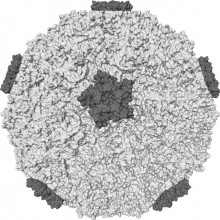
Could we eliminate the common cold?
Chris - So, who's in favour of every time we experience a cold, we just isolate ourselves in the middle of nowhere until we get better? What do you think, Richard?
Richard - Well, it does drive me mad when you're in work and someone comes in with a streaming cold and then infects everyone else. So yeah, I'm in favour. I don't think it would work because you've got cold viruses just everywhere. You'd have to disinfect the world.
Chris - Tamela?
Tamela - Well, I don't know the lifetime of the virus, but presumably, they can outlast being outside of a human body for a while. But yeah, I completely agree. You can usually trace it back to a particular person that sneezed 2 weeks ago and then everyone got the cold afterwards, so it's quite annoying.
Chris - Yeah, I knew people at work like that. I mean, it's based on sort of sound mathematical principles though isn't it because when I was in South Africa, I was talking to a gentleman there who runs an antenatal clinic for people who were in the poorer end of society. South Africa is an unusual country because it has a big problem with HIV, but it also has a lot of money and therefore, can spend that money on drugs for HIV. So, you tend to have a very high number of people in the population who have HIV who are treated. So, he said, perhaps 50% of the young women coming to antenatal clinic in his clinic have HIV. It's a dramatically high number, but he said to me, "Look. If you could stop the entire world having sex for 3 months, actually, HIV would completely vanish because most of the transmissions that occur are when people are first infected and they're really, really infectious because they have no immune response to the virus. They've got very high levels of the virus in their bloodstream and that's when they're most likely to pass it on." So, the point Conrad is making seems a bit facetious, "Let's isolate ourselves" but, actually, it does have a sound mathematical point, and taken to an extreme with a virus like HIV, you could actually potentially knock it on the head. But we know for a fact that that's just not going to happen because no one is going to do that, but interesting all the same...
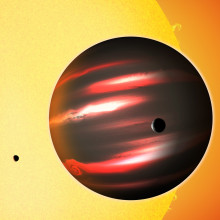
When will we have photos of exoplanets?
Tamela - We've actually taken direct pictures of exoplanets, but I'll say that this is still very much on the frontier of exoplanet studies. Early on, we were looking at just wobbles in the luminosity of the light from the star, what we're looking at how it wobbles in space as well. But now, we're starting to actually get direct imaging. I will say that it is mostly in the infrared spectrum of radiation. Although the Hubble Space Telescope has actually taken some images as well. If you look at these, they're pretty much that pale blue dot image. The bright star that's actually been blocked out by a filter because otherwise, we'd be blinded by its light, and next to it, you just see this tiny little dot that's the planet they've managed to isolate. It actually is a very, very powerful image to say this is another world. So, we've been doing this for some years and I'll just say it is a very tricky thing to do. You need to have very good understanding of the atmosphere that you're looking at. So, if you have a ground based telescope, you have to correct for what the atmosphere is doing in order to get a stable picture. Chris - Tamela, thank you very much. It's amazing how fast it's moved on though and how far we have come when you think - when I was at school, people hadn't really got to grips with the concept that there might be planets around other stars.
Tamela - No, it's early '90s that you finally got the first confirmed detections.

How strong are gorillas?
Ginny - An adult gorilla is about six times stronger, if you're talking about upper body strength, than an adult human. So, that's why they could pick up that tyre without looking like they were breaking a sweat. If you think about it, that makes sense because, although gorillas mainly walk on the ground now, they much more recently than us swinging in the trees and they needed strong arms for that. Even now, they walk partly on all-fours. Their arms are therefore much more frequently used to support themselves than ours are, and that's probably one of the reasons that they're so strong. They are actually remarkably gentle in the wild so although they could do a lot of damage, they don't tend to.
Chris - That's reassuring, isn't it? I mean, you go and see people going and seeing these gorillas and I'm often surprised actually that you can get quite that close to them!
Ginny - Yeah. There's some lovely footage of David Attenborough - you wouldn't be allowed to do this now because you'd be worried about infecting them and causing them harm - he was basically playing with a load of gorillas and they were climbing all over him. They really do seem to accept him after a while. It looks lovely. I'd like to have a go at that!
Chris - I was watching an edition of a programme about the Great Barrier Reef last night and there were whales that were coming along to inspect divers. Animals really do seem to have a degree of curiosity about us humans, don't they?
Ginny - Definitely. Particularly the most intelligent animals, which are the primates, the dolphins and whales. Also birds, like crows, are all very curious and very interested in us and very intelligent.










Comments
Add a comment